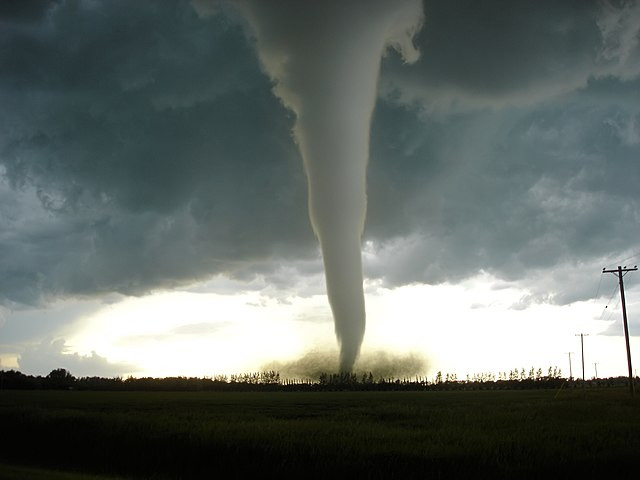
Chasing tornadoes across the Great White North
If a tornado rips through a forest, and nobody is around to hear it, does it make a sound?
This play on the philosophical dilemma that questions perception and reality, exemplifies a lot of the ongoing investigative science currently unfolding around Canadian tornadoes.
The number of question marks, including how they form, where they form and how often they touch down, is due in part to a lack of monitoring, but also practical barriers. Because so much of Canada is uninhabited—approximately 80 percent of the country’s landmass is devoid of human development—there is just nobody there to report a tornado should it develop.
Picture it. A wide expanse of marsh stretching out as far as the eye can make out. A landscape that looks almost lunar, save for the colour. Bogs the shade of maple syrup swirling around islands of mossy, stubby vegetation. A deer bends to drink from the nutrient rich water. On the horizon, a thin appendage droops down from the sky. A giant grey finger straightening through a cloud the colour of a fresh bruise, twirling in the air as if attempting to stir the atmosphere above this expanse of Hudson Bay Lowlands.
Is this a real scenario? Possibly, but the deer is the only witness.
“It’s the people that tend to report the thunderstorms, not the deer and moose in the boreal forest,” David Sills, the executive director of the Northern Tornadoes Project (NTP) says jokingly.
Thanks to the NTP, launched in 2017 at Western University with the support of Impact WX, Canada is starting to know a lot more about this rare, but dangerous and damaging weather phenomena.
Can the NTP solve the age old philosophical dilemma and tell you whether an unheard tornado makes a sound? No, but they can certainly tell you that it leaves behind a distinctive trail of snapped trees and abraded soil, visible on a satellite image that allows scientists to identify it.
This is just one of the many advancements the NTP have spearheaded in tornado science in Canada, uncovering knowledge that will be crucial to help develop early warning systems for protecting life and property as our climate changes.
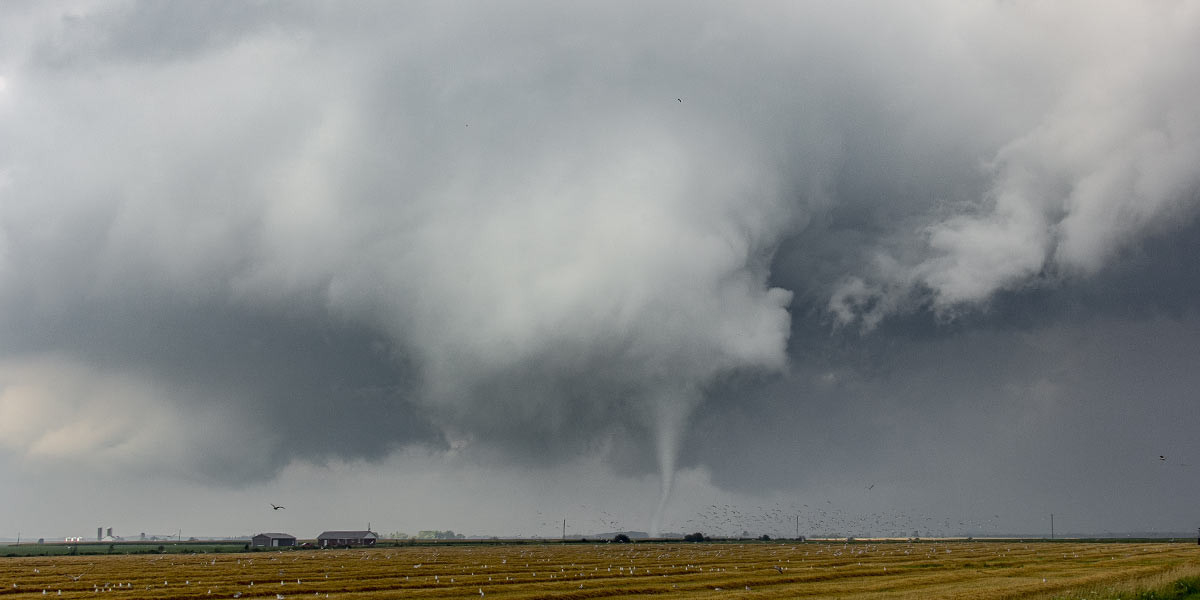
(Northern Tornadoes Project)
In 1996, Hollywood stuck a livewire into the engine of tornado science in North America in the form of the movie Twister. Starring Helen Hunt and Bill Paxton as storm chasing scientists, the movie dedicated a large portion of its runtime to not only showcasing the destructive power of tornadoes, but the struggle and dedication of scientists trying to understand these awe-inspiring storms. The storm chasing duo risk their lives to try and launch a device into the tornado, after which a swarm of censors would be released to provide a glimpse inside the belly of the beast.
Sills says the movie was a watershed moment for tornado science, succeeding in getting a lot of people interested in these storms, and inspiring many to get in their cars and try storm chasing for themselves. Many may have been disappointed by the reality of chasing, which Sills describes as 99 percent nothing and 1 percent “go go go”. The frequency of tornado activity in a matter of days is one of the few things the Twister movie took liberties with.
But more than that, nearly 20 years after the movie’s release, life is now imitating art. Sills say in the last few years there have been efforts to do exactly what was viewed as Hollywood magic at the time—launch something into a tornado.
In recent years, one chaser managed to launch a rocket loaded with different scientific instruments into a tornado. This was done with an EF4 tornado in Lawrence, Kansas, a hotspot infamous along Tornado Alley in the United States. EF stands for Enhanced Fujita scale which is used to measure the strength of tornadoes.
In Canada, the Northern Hail Project, a sister initiative of the NTP, developed an instrumented hail stone which was then launched with a parachute into the updraft of a tornado. The device was sucked in and provided interesting data about the path of a hailstone through the storm.
“These things that were once fantasy with Twister are now becoming a reality,” Sills says.

David Sills is the executive director of the Northern Tornadoes Project.
(Northern Tornadoes Project)
Sills was chasing storms long before Twister put it on the national radar, fascinated by the difficult duality of these weather events that, however briefly, connect the heavens and the Earth and exemplify the best and worst of nature.
“Tornadoes are both awesome, in the true sense of the word, and awful, there is that duality to them all the time,” he says. “We want to see the beauty and majesty of a tornado, but please, in a field, away from people, you don’t want to see that destruction.”
Unfortunately, destruction happens.
Last summer, members of the Northern Hail Project team were outside Didsbury, Alberta collecting hail data when the storm they were following generated an EF4 tornado. It ended up being one of the strongest, most destructive storms in Canadian history with wind speed that reached 275 km/h.
“They all saw it and they all saw the destruction it caused,” Sills says.
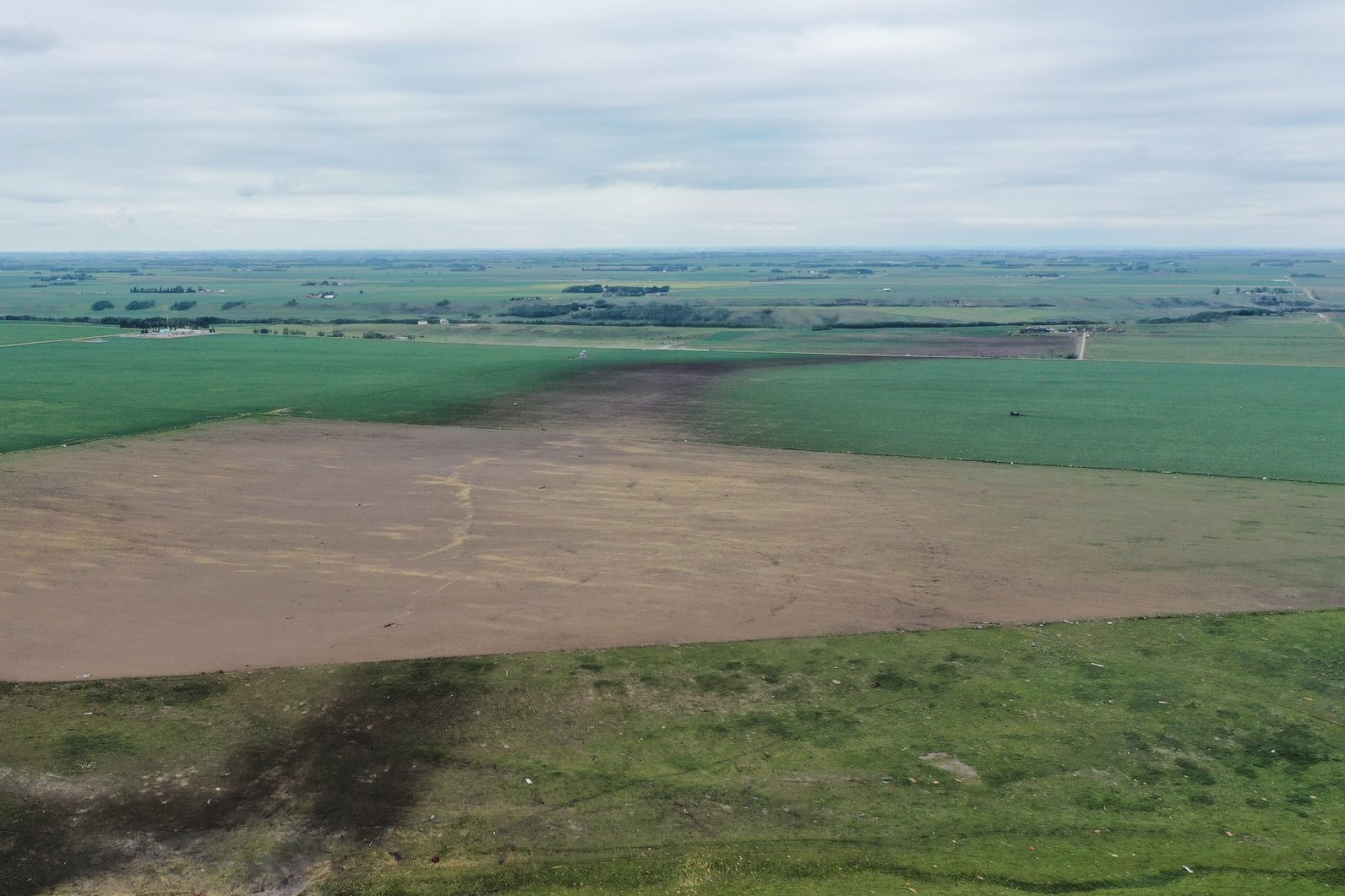
The abraded path left behind by the Didsbury EF4 tornado.
(Northern Tornadoes Project)
There is one step up from EF4, and there has only been a single EF5 tornado in Canadian history, recorded in Elie, Manitoba in 2007. The storm lasted 35 minutes and reached max wind speeds between 420 and 510 km/h. Miraculously, nobody was killed, but the tornado caused nearly $40 million in damage.
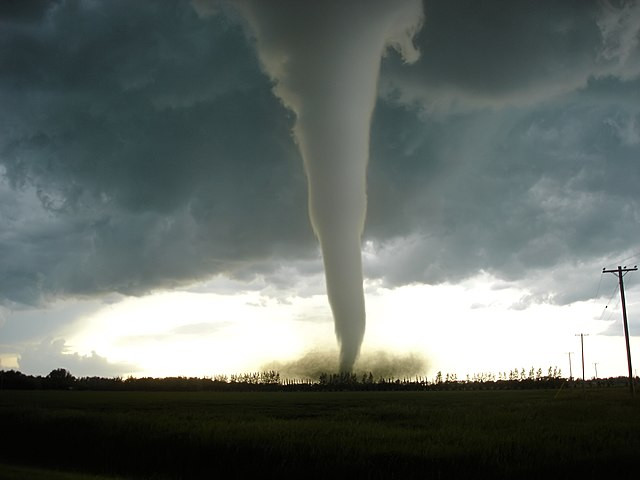
The only ever recorded E5 tornado in Canadian history, pictured here, touched down in Elie, Manitoba in 2007.
(Justin Hobson/Wikimedia Commons)
The sudden development of these storms is one of the elements scientists have been working hard to try and understand. Before the NTP, the true climatology of Canada was unknown, meaning nobody had any real idea just how many tornadoes were occurring in the country. Now, thanks to the NTP, there is a better idea. Canada sees the second most tornadoes annually of anywhere in the world next to the United States. Based on current data, between 2017 and 2023 Canada saw 100 tornadoes a year on average. The United States records over 1,000 annually
The Canadian number could change as the NTP is routinely discovering new, past tornadoes to add to the tally. In January, the researchers announced the discovery of 9 new tornadoes for 2023 and 27 from the years prior. All of these were found through the use of satellite imagery. Tornadoes leave behind not only felled trees, but distinctive patterns as they grind their way across the earth.
“These tornado tracks pop out,” Sills says.
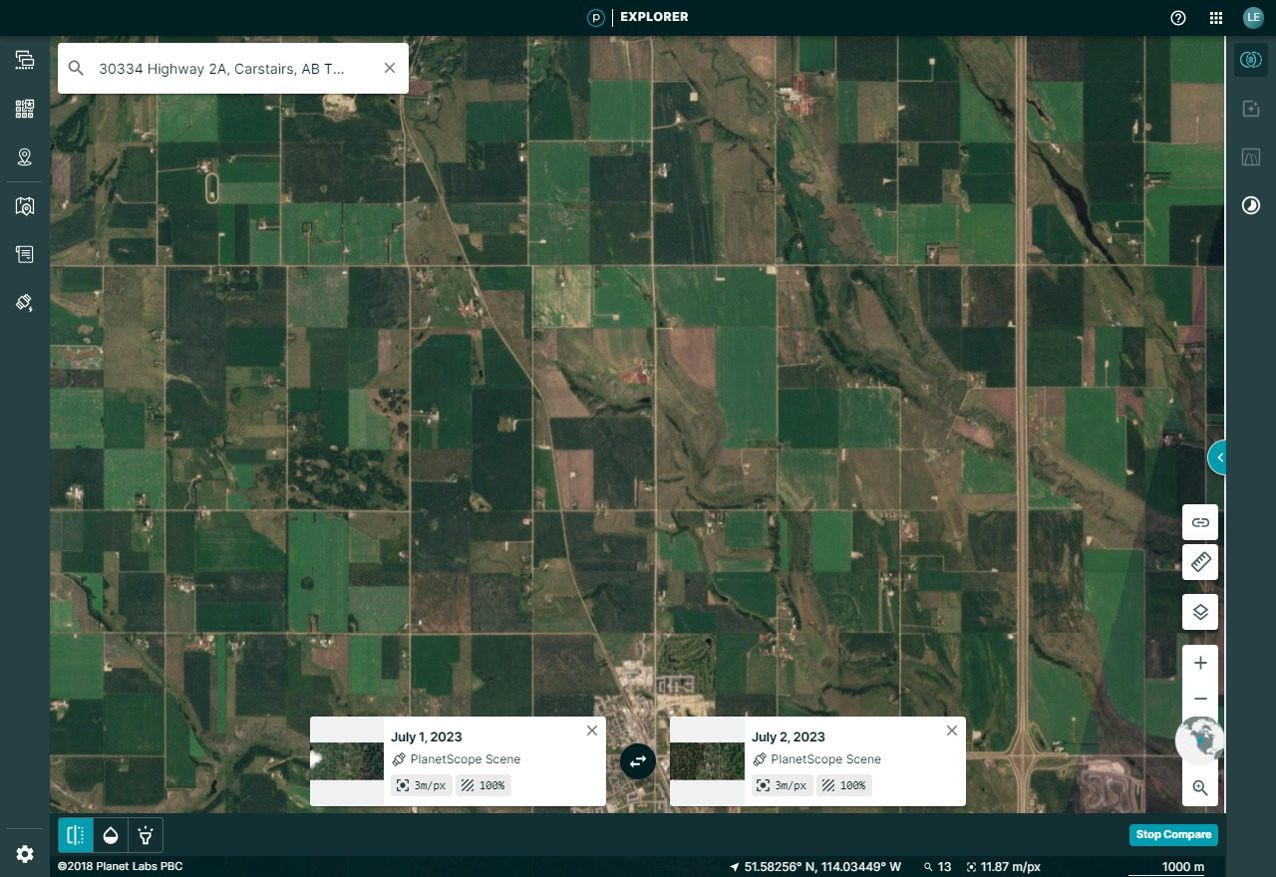
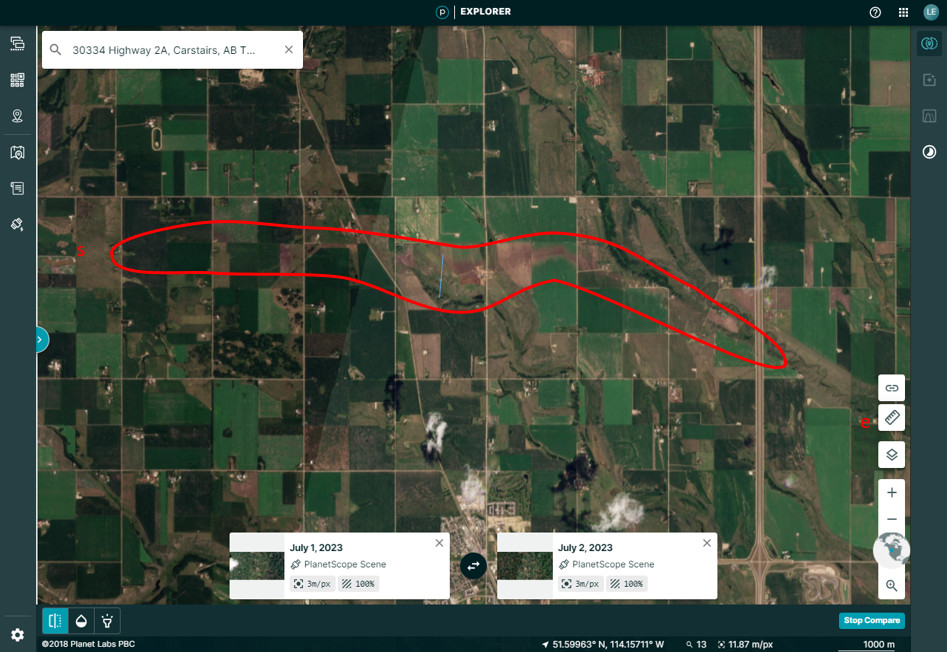
The distinctive trail left behind by the Didsbury tornado as seen on satellite imagery.
(Northern Tornadoes Project)
It’s a technique the NTP has used to identify hundreds of tornadoes dating back to the 1980s.
Why does this matter?
Why do we need to know about these tornadoes?
Nobody was hurt, no homes were damaged.
It essentially did not make a sound.
Sills says having a true picture of just how many tornadoes are touching down can provide incredibly valuable reassurance to those who are tasked with issuing the warning that a tornado could be on the way.
Before joining the NTP, Sills worked for two decades with Environment Canada as a severe weather scientist studying tornadoes and conducting work on “now-casting”—effectively weather forecasting in the extreme short-term. The very type of forecasting that can provide people with the advance notice that a tornado is on the way and to take cover immediately.
In the case of the Didsbury tornado. The EF4 reduced several homes to rubble. But thankfully, nobody was killed as people were able to take refuge in their basements while the tornado ripped their home to shreds only feet above their heads.
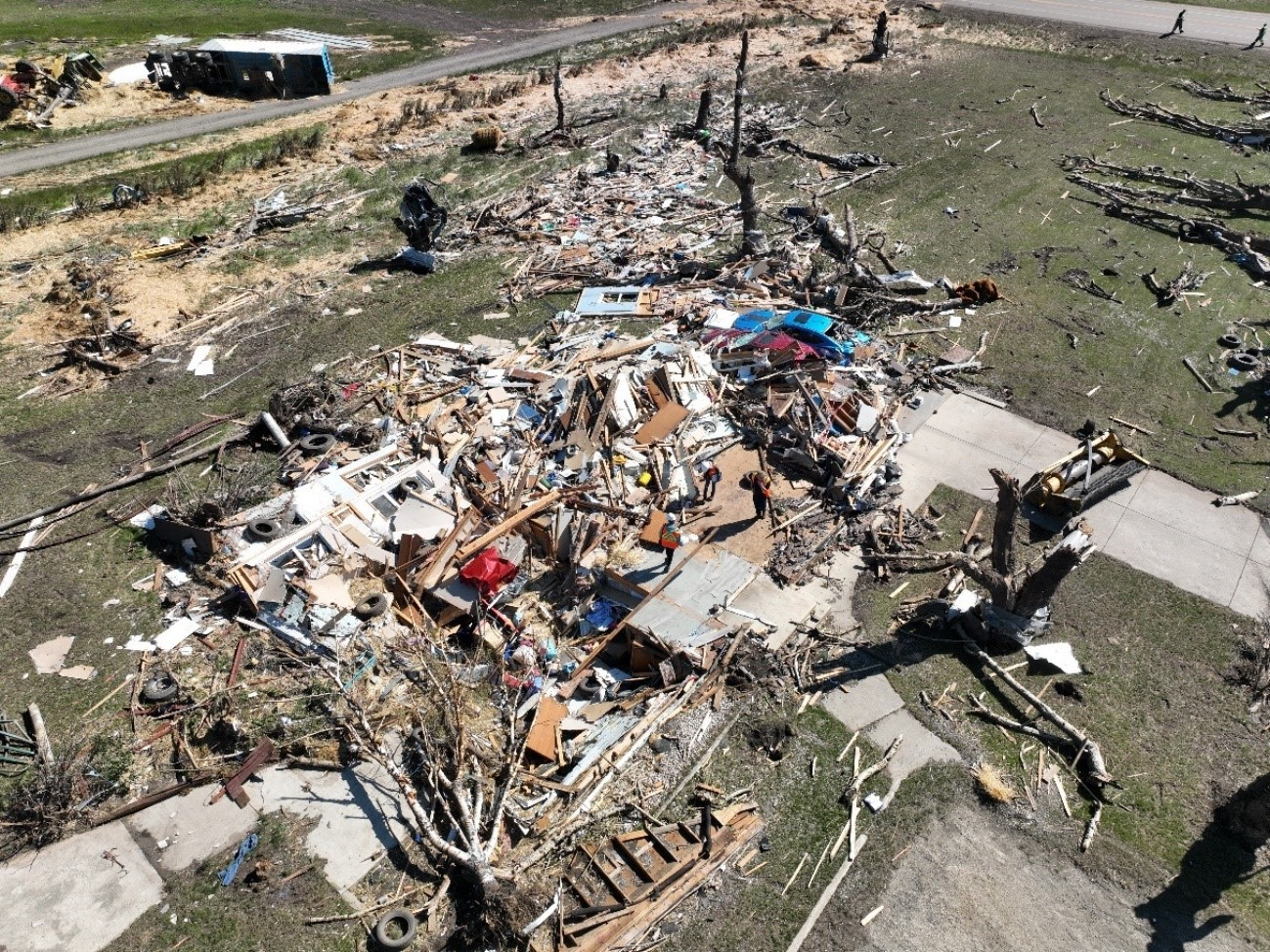
A home destroyed by the Didsbury tornado, thankfully nobody was killed by the twister.
(Northern Tornadoes Project)
Issuing the warning that a tornado could be on the way is not a black and white decision. Sills says it involves weighing an incredible amount of factors, and puts a lot of pressure on the person tasked with making the call.
“A lot of forecasters are a little reluctant,” Sills says about issuing the blaring warnings that cut through radio and TV programming and pop up on cell phones across the given area.
“Sitting in that hot seat with that button to send or not in front of you is one of the toughest things.”
But having more information about other tornadoes that happened in the area in the past, whether they had any impact or not, can help inform that decision and make it easier to press the button and issue a potentially life-saving warning.
“Before they may have been reluctant to issue a tornado warning up in far northern Ontario because they didn’t have a good feel for how often they happened up there and they never got a report back previously,” Sills says.
And these remote areas are not always uninhabited, as Canada’s northern reaches are popular fishing, hiking and camping locations. In 2009, a tornado tore through a fishing resort in Lac Seul, in northwestern Ontario. The EF2 picked up one of the fishing cabins and flung it into the lake, killing two people who were inside.
This knowledge can also be useful to protect the linear infrastructure that typically runs through these areas. If there’s recorded tornado activity in the area, the pipeline or electrical lines can be reinforced or built to potentially withstand high winds.
The increasing scale of data on Canadian tornadoes will also form a useful foundation for scientists to study the impacts of climate change on these storms.
It remains unknown what implications our warming planet will have on the frequency or intensity of tornadoes. Unlike established science that can state with great certainty that climate change will cause more frequent and more intense weather events. The direct connection to tornadoes is not as clear.
This is mainly due to the size of these storms, which by comparison to larger weather events like hurricanes, are quite small.
“The problem is when you’re talking about phenomena that are the size of a thunderstorm or even smaller with a tornado, the confidence in whether climate change is causing a change or not in the occurrence or intensity gets really low,” Sills says.
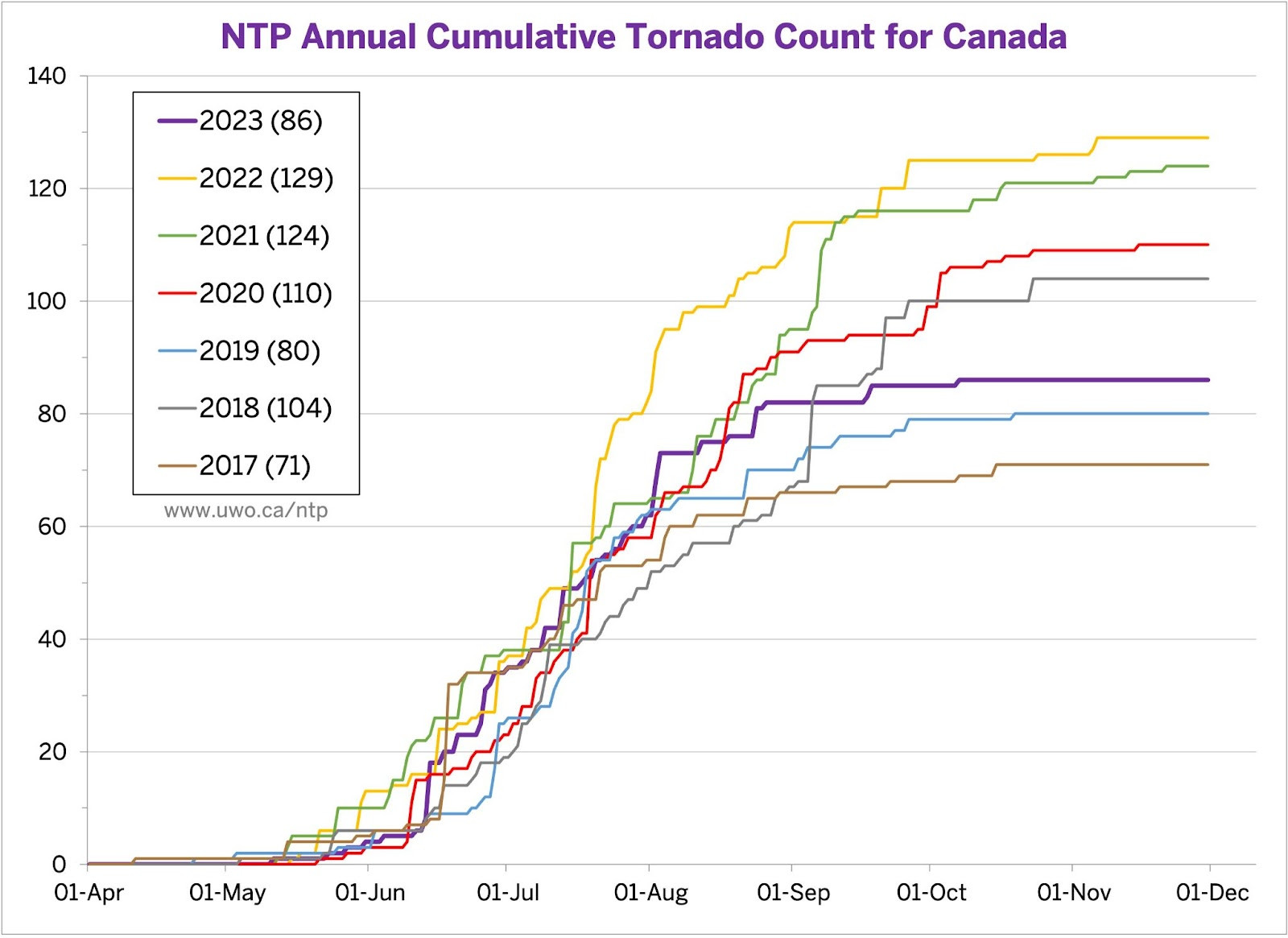
The number of recorded tornadoes in Canada and the month they occurred.
(Northern Tornadoes Project)
Due to the relative rarity of tornadoes in Canada, developing trends around their occurrence is quite difficult. The lack of historic data also makes it hard to determine how much things could have changed compared to 20 or 30 years ago.
A lot more data is required to identify any connections.
“We’ve got lots of research ahead of us,” Sills says.
Despite this uncertainty, what we do know about the swirling face of tornadoes is fascinating and ever-changing.
Based on an analysis of data in Southern Ontario—where the largest amount of data is available—it appears the province’s tornado season may be shifting. Previously, much of Ontario’s tornado activity would occur in May, June and early July. Now, Sills says more and more twisters are touching down in late July, August and early September. There is still work to be done to definitively connect this phenomenon to climate change, Sills states.
In the United States, where the data is more robust simply due to the incredible number of twisters that occur, it’s easier to identify changing trends. What experts have noted is a concerning eastward shift in Tornado Alley. It’s concerning for a number of reasons, but mainly as this tornado prone zone glides eastward it is leaving areas with relatively low population density and entering an area of the country with relatively high population density.
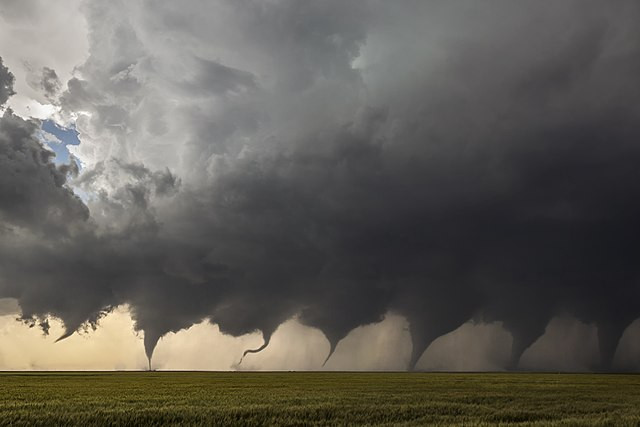
A set of stitched images showing the development of a tornado in Minneola, Kansas in 2016. This supercell storm spawned at least 12 tornadoes and at times had two or three tornadoes on the ground at once.
(Jason Weingart/Wikimedia Commons)
Initial data projections completed by the NTP in 2017 predicted Canada’s hot spots would be in southern Saskatchewan, southern Ontario and Southern Quebec. But these projections have not panned out, with the hotspots actually appearing increasingly in eastern Ontario and southern Quebec and less in the western locations, which fits with the eastern shift being observed south of the border.
“We still can’t connect that to climate change,” Sills says.
There is actually potential for climate change to reduce the number of tornadoes experienced in Canada. Last year was one of the most destructive wildfire seasons in history, the multiple colossal wildfires creating a giant smoke plume that blanketed much of the country. This smoke blocks out the sun and keeps air temperature lower. This reduces the chances that warmer air will rush up into the atmosphere and create the conditions susceptible to tornado development.
Last year Canada only saw 86 tornadoes, its lowest amount since 2017.
But while it may make the conditions for tornado formations less than ideal, it does not make them impossible. Last year saw the first NTP documented wildfire generated tornado, also known as a “pyro-tornado” over Gun Lake in British Columbia. These extremely rare events occur when a wildfire is strong enough to generate a pyrocumulonimbus cloud—the wildfire effectively generating its own weather system from the smoke and hot air being drawn in by the force of the rising heat. These systems can generate storm-like conditions, and rarely, tornadoes. A video of the storm was captured by the BC Wildfire Service.
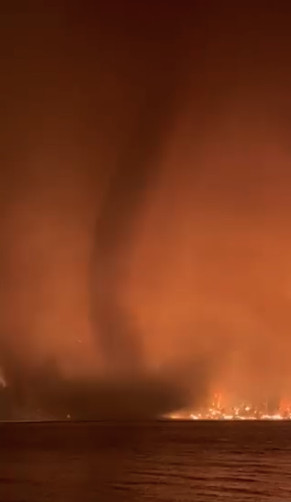
A screengrab of the pyro-tornado generated by a wildfire in BC last year.
(BC Wildfire Service)
“It really is pushing our understanding to the edge of what we thought we knew about how tornadoes could be generated,” Sills says.
Many contributors to the NTP send in reports, images and observations through social media, which has proven to be an incredibly useful tool for gathering data. With high-definition cameras in the pocket of basically every person in the developed world, tornadoes in the 21st century are being photographed now more than ever.
The NTP rewards these dedicated observers with hoodies, hats and other NTP swag. They also reward them by putting the science they are creating to good use.
Part of the mission of the NTP, in conjunction with ImpactWX and lead researcher Greg Kopp, is to develop enhancements to Building Codes and policy to ensure homes are able to withstand the high winds generated by tornadoes.
Sills says in many instances, like in the tornado that tore through a part of Barrie in 2021, many roofs are being pulled off when they shouldn’t be.
Kopp and the NTP have been advocating for the use of hurricane clips in tornado prone areas—a device that reinforces the connection between the roof and the walls of a house. In Canada, most of the Building Code standards around roofs deal with the downward pressure, typically ensuring a roof is able to withstand the weight of snow created by a traditional Canadian winter. Very little attention is paid to the upward force that could come from extremely high winds.
These small changes could have far-reaching impacts for houses and the people who call them home that may find themselves in the path of a tornado. Several of the homes involved in that tornado in Barrie three years ago, are still uninhabitable.
There are success stories in the efforts of the NTP to spread the word on this—one builder has constructed “tornado-resistant” homes in St. Thomas outside of London.
A reboot of the 1996 Twister movie—Twisters— is planned to be released later this year. Will it inspire a new generation of storm chasers?
That remains to be seen, but Sills says there are already a strong contingent of citizen scientists across the country dedicated to helping NTP gather data.
“Some people dedicate their lives to chasing these things, that’s no joke,” Sills says. “They’re out there every summer and they sell their videos to make enough money to get out there for the next summer, they’re just kind of addicted to it.”
“It’s an amazing work of nature.”
Listen to an interview with David Sills on episode #181 of The Pointer’s What’s the Point podcast.
Email: [email protected]
At a time when vital public information is needed by everyone, The Pointer has taken down our paywall on all stories to ensure every resident of Brampton, Mississauga and Niagara has access to the facts. For those who are able, we encourage you to consider a subscription. This will help us report on important public interest issues the community needs to know about now more than ever. You can register for a 30-day free trial HERE. Thereafter, The Pointer will charge $10 a month and you can cancel any time right on the website. Thank you
Submit a correction about this story


